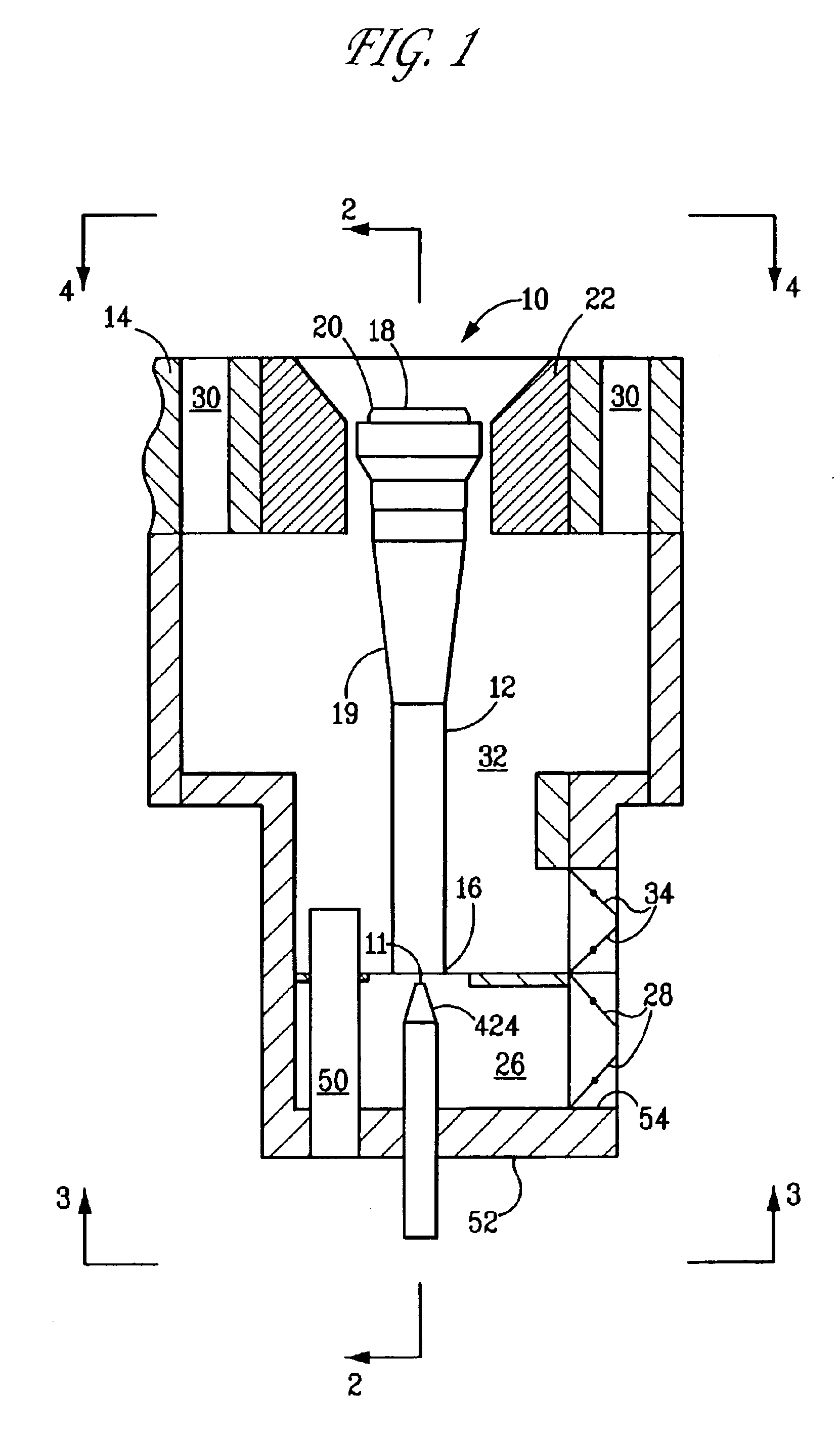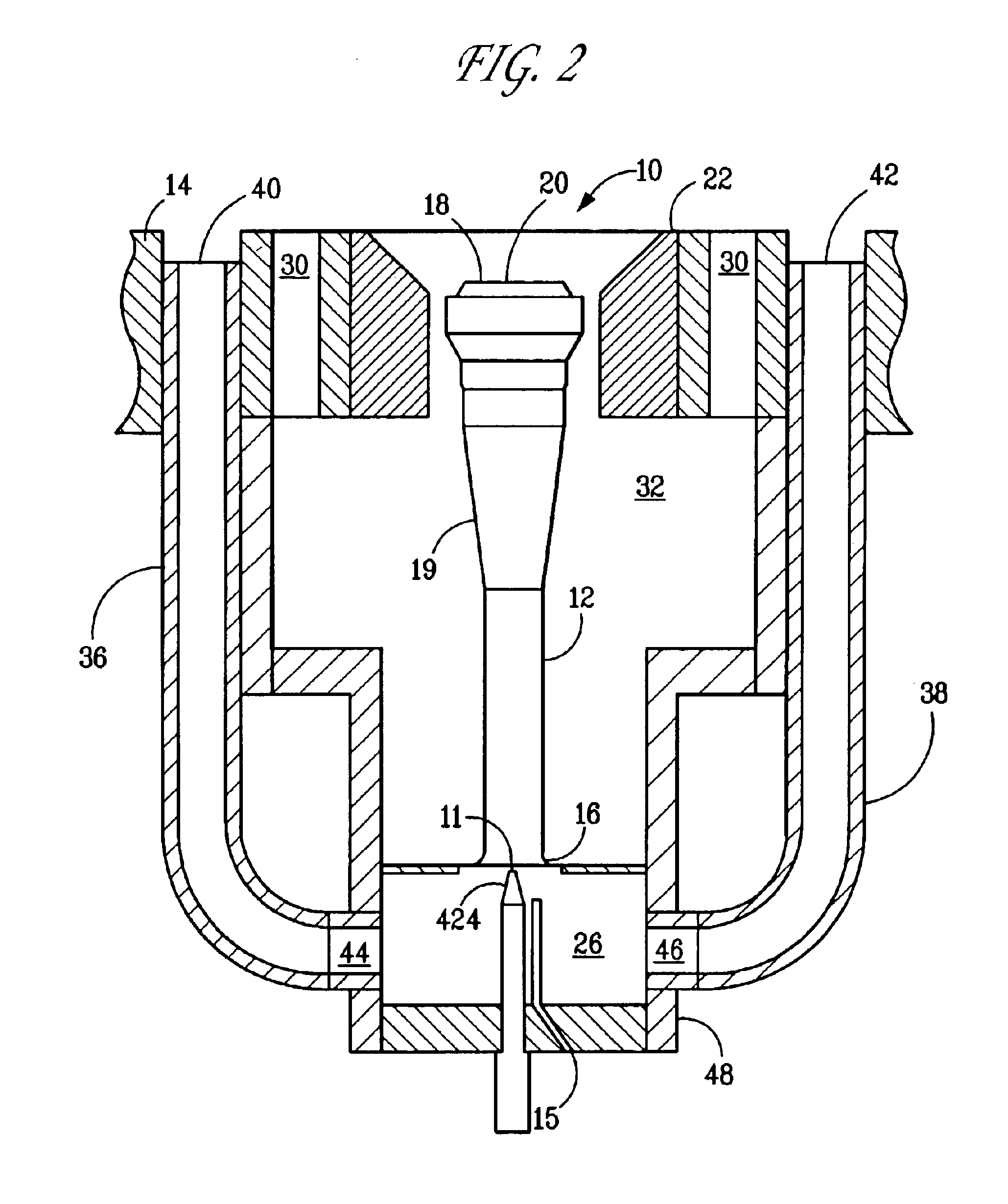Fuel spud for high temperature burners
a burner and high temperature technology, applied in the direction of burner ignition devices, combustion types, lighting and heating apparatuses, etc., can solve the problems of nox burners, less desirable alternatives to burner design improvements, and high cost, so as to reduce nox emissions, reduce nox emissions, and increase the inspiratory
- Summary
- Abstract
- Description
- Claims
- Application Information
AI Technical Summary
Benefits of technology
Problems solved by technology
Method used
Image
Examples
example 1
[0081]The following example demonstrates that using a converging / diverging Laval nozzle fuel spud can increase gas velocity (and hence momentum). The following burner condition was studied: fuel rate=348 lb. / hr; fuel composition=CH4; fuel upstream temperature=60° F.; fuel upstream pressure=50 psig. A fuel spud throat diameter=0.3360 inch was selected. Three different nozzle outlet diameters were evaluated for their impact on exit pressure and exit velocity. The results of the analysis follow:
[0082]
Gas Pressure atGas Velocity atNozzle Exhaust DiameterNozzle ExitNozzle Exit0.3855 inches 0.0 psig2,014 ft / sec0.3611 inches 5.0 psig1,833 ft / sec0.3467 inches10.0 psig1,670 ft / sec
[0083]As may be seen, the highest gas velocity achievable occurred at a nozzle exhaust diameter of 0.3855 inches (gas exit pressure=0.0 psig). This increase in velocity and momentum directionally improves the inspirating capability of the fuel spud / venturi combination, permitting the FGR ratio to be increased on a b...
examples 2-4
[0084]These examples demonstrate that using a variable fuel preheating system to control fuel supply rates can eliminate the primary problem associated with variations in firing rates in a converging / diverging Laval nozzle fuel spud.
example 2
[0085]Fueling rate for the optimized nozzle of Example 1 (nozzle exhaust diameter of 0.3855 inches) was reduced to 233 lb. / hr., while using the same fuel (CH4) and maintaining fuel upstream temperature at 60° F., fuel upstream pressure at 28.4 psig, spud throat diameter at 0.3360 inches.
[0086]At this fueling rate, the following results are predicted:
[0087]
Gas Pressure atGas Velocity atOptimum Exhaust DiameterNozzle ExitNozzle Exit0.3534 inches0.0 psig1,755 ft / sec
PUM
 Login to View More
Login to View More Abstract
Description
Claims
Application Information
 Login to View More
Login to View More - R&D
- Intellectual Property
- Life Sciences
- Materials
- Tech Scout
- Unparalleled Data Quality
- Higher Quality Content
- 60% Fewer Hallucinations
Browse by: Latest US Patents, China's latest patents, Technical Efficacy Thesaurus, Application Domain, Technology Topic, Popular Technical Reports.
© 2025 PatSnap. All rights reserved.Legal|Privacy policy|Modern Slavery Act Transparency Statement|Sitemap|About US| Contact US: help@patsnap.com



